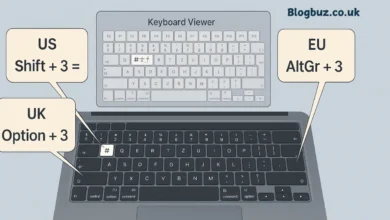How to Install an Integrated Dishwasher: A Comprehensive Guide

Integrated dishwashers are a cool way to jazz up any modern kitchen. They look stylish and fit right in with your cabinets, making everything look neat and saving space. Plus, they’re great for getting your dishes super clean.
Getting them installed properly is key if you want them to work well for a long time. You’ll need a mix of DIY skills and to be careful with safety stuff to set it up right.
Once you get the hang of how they work and what they can do, you’ll feel good about putting one in and enjoying the ease and power these dishwashers bring.
Gathering All Necessary Tools and Materials
Before you dive into setting up your new dishwasher, make sure you’ve got all the right tools and stuff nearby. It’ll save you time and keep things going smoothly. Here’s what you’ll need:
- Screwdriver. You’ll need this for dealing with screws.
- Adjustable Wrench. Great for tightening nuts and bolts.
- Level. Makes sure everything’s straight and balanced.
- Plumbing Tape. Stops water from leaking out.
- Utility Knife. Perfect for cutting stuff when you need to.
- Pliers. Handy for gripping and twisting parts.
- Bucket. Useful if there’s a water spill.
- Silicone Sealant. Stops water from sneaking through gaps.
Have your dishwasher and the manual ready, plus any extra bits like brackets and screws. If the drain hose is a bit short, you might wanna grab an extension. By sorting all of this out first, you’ll make the whole job easier and quicker.
Preparing the Kitchen for Installation
When you’re setting up your new integrated dishwasher, start by grabbing a tape measure and checking out the space where it’ll go. You wanna make sure the width, height, and depth match up with the dishwasher’s size.
Got enough room for the door to swing open all the way? Look out for any stuff like pipes or plugs that might get in the way. Safety’s key, so switch off the water and power to avoid any mishaps.
If you’re getting rid of an old dishwasher, carefully unplug the water and power before pulling it out. It might be handy to have a mate help you to keep things safe.
Once that’s done, clean up any mess and lay down a tough cloth on the floor to keep it from getting scratched or wet. Having a neat and safe space makes things go smoother. Prepping your kitchen well really sets you up for an easy and successful install.
Connecting the Dishwasher’s Water Supply Line
Setting up a dishwasher’s pretty simple, really. One key part is hooking up the water supply. First off, you’ve gotta find the water inlet, usually at the back or bottom of the dishwasher. Not sure where it is? Just check the manual.
Once you’ve got it, connect the water line and use some plumbing tape to stop any leaks. Tighten it up, but don’t go overboard or you might break something. Then, connect the other end of the hose to the water valve and make sure it’s snug.
Slowly turn the water back on and watch for leaks. It’s a good idea to have a bucket handy just in case. Give everything one last look-over to make sure nothing’s dripping, and you’re all set for your dishwasher to run smoothly.
Connecting the Electrical Supply
Before hooking up your dishwasher, make sure the power’s off. This helps you dodge any nasty electric shocks—safety comes first, right? A voltage tester’s a handy tool to double-check there’s no power running through.
Once you’re sure the power’s off, find the dishwasher’s power cord and plug it into a grounded outlet. This makes everything safe and runs smoothly.
Check the installation manual for your dishwasher model to see how to handle the wiring. Note the wire sizes and colours so it all matches up with what the manual says.
If this all seems a bit daunting, you might want to ask a professional installer or qualified electrician for help. After you’ve got it all connected, switch on the dishwasher for a quick test run.
If it works, you’re good to go with the rest of the installation. This little check gives you peace of mind that everything’s set up correctly.
Placing the Dishwasher into the Cabinet Space
Getting your dishwasher to fit just right in the cabinet is super important for it to work well and look good. Start by gently sliding it into place, but don’t forget about the water and power connections.
Make sure it’s level, or you might hear weird noises or it might not work right. You can use a wrench to tweak the feet and a spirit level to check it’s all balanced.
Line up the top of the dishwasher with the countertop for a smooth look. If you need to, adjust the feet a bit. Make sure the sides match up with the cabinets next to it. Once it all looks good, use the brackets or screws that came with it to keep it steady.
Before you finish, double-check everything’s straight and tight. Fixing any issues now can save you trouble later. When the dishwasher’s set up properly, it’ll run like a charm and make your kitchen look even better.
Final Steps and Testing
You’re almost done with setting up your dishwasher, and a few simple steps can make sure it works like a charm. First, take a look at the drain hose. Lift it up a bit to stop any backflow and use some strong clips to keep it from leaking.
Then, go over all the connections. If you spot any loose screws, gently tighten them up. Make sure the dishwasher’s bolted down with its brackets, so it doesn’t wobble or make weird noises when it’s running.
Now, let’s give it a test run. Turn it on to make sure everything’s connected right and check for any leaks or odd sounds. Peek under the dishwasher for water and fix any issues you see.
Once everything’s sorted, you’re ready to enjoy your shiny new dishwasher and make kitchen chores a breeze!
Conclusion
Installing an integrated dishwasher can be super satisfying, adding a modern touch to your kitchen. First things first, get all your tools and materials ready for a smooth setup. Make sure you measure the space right so it fits perfectly.
Then, carefully hook it up to the water and power. Placing the dishwasher just right is key, so take your time to get it nicely aligned and secured in the cabinet. Don’t forget to check all the connections to make sure there are no leaks or problems.
There’s nothing like the feeling of finishing the job and seeing your dishwasher looking sleek and working efficiently. Thinking about your next DIY adventure? Dive in and enjoy the satisfaction of your hard work!




